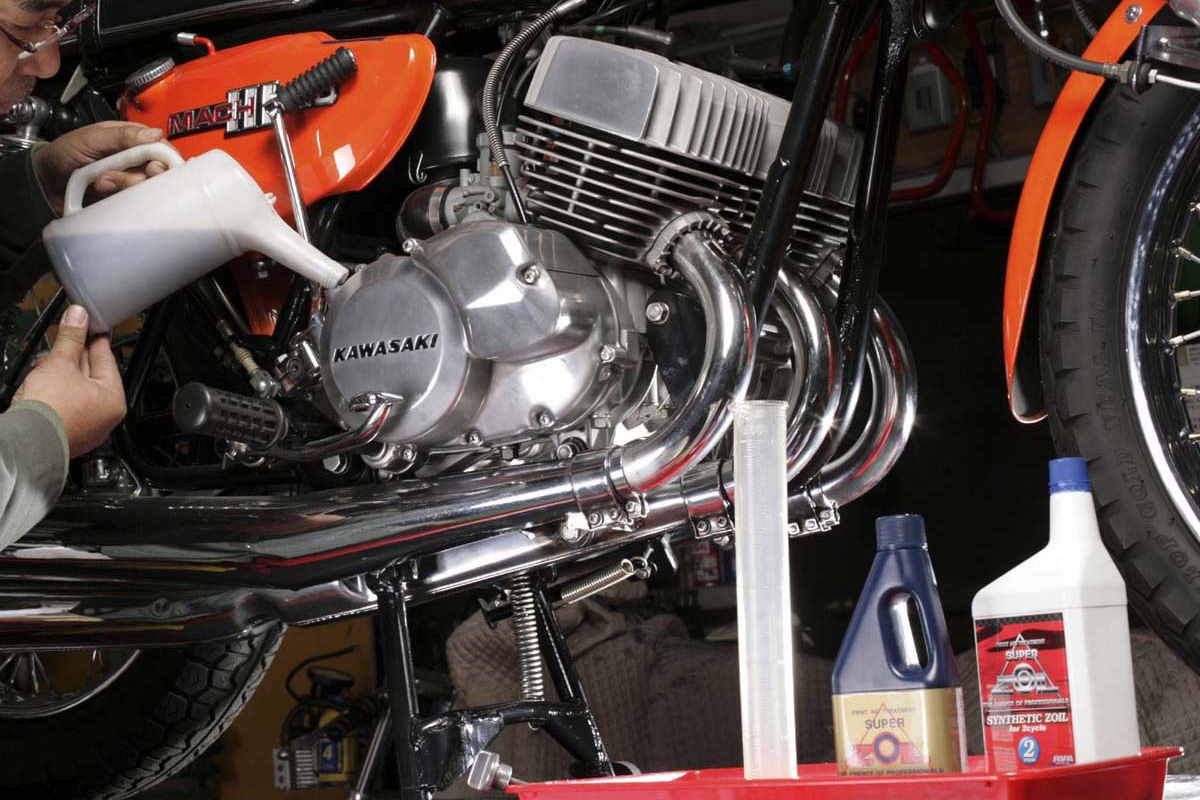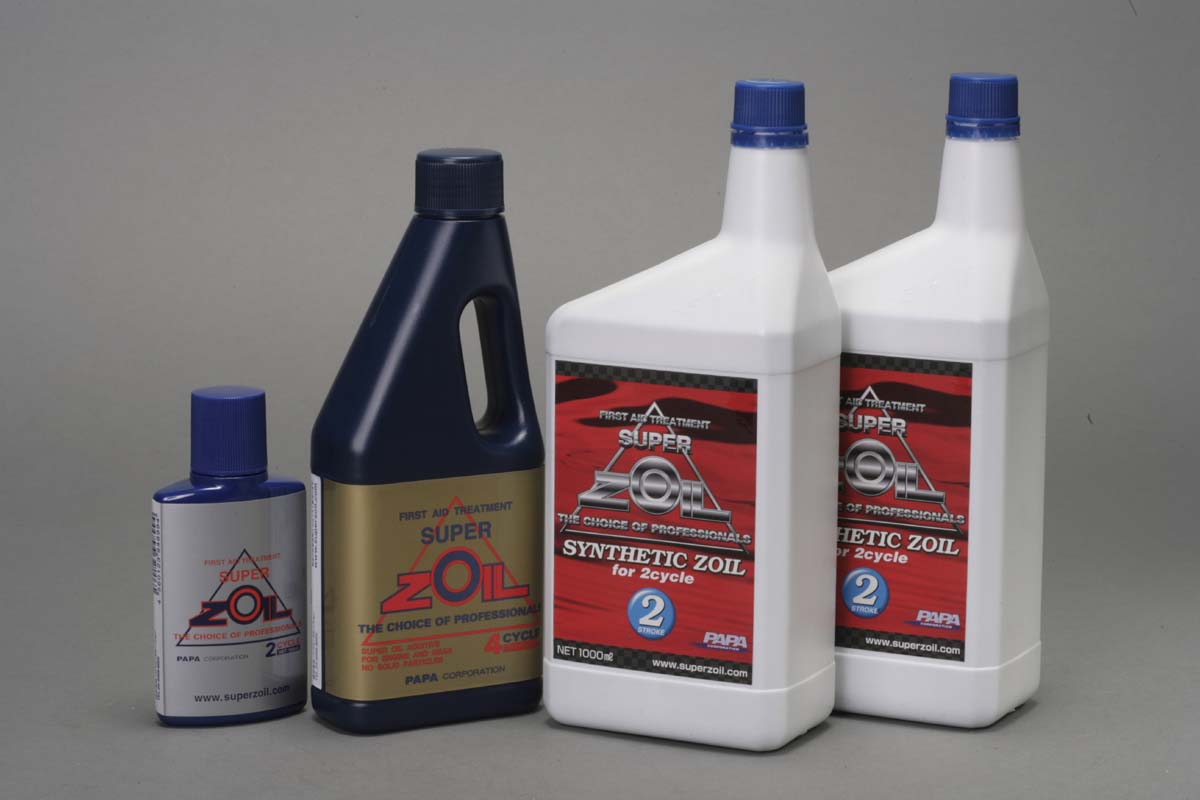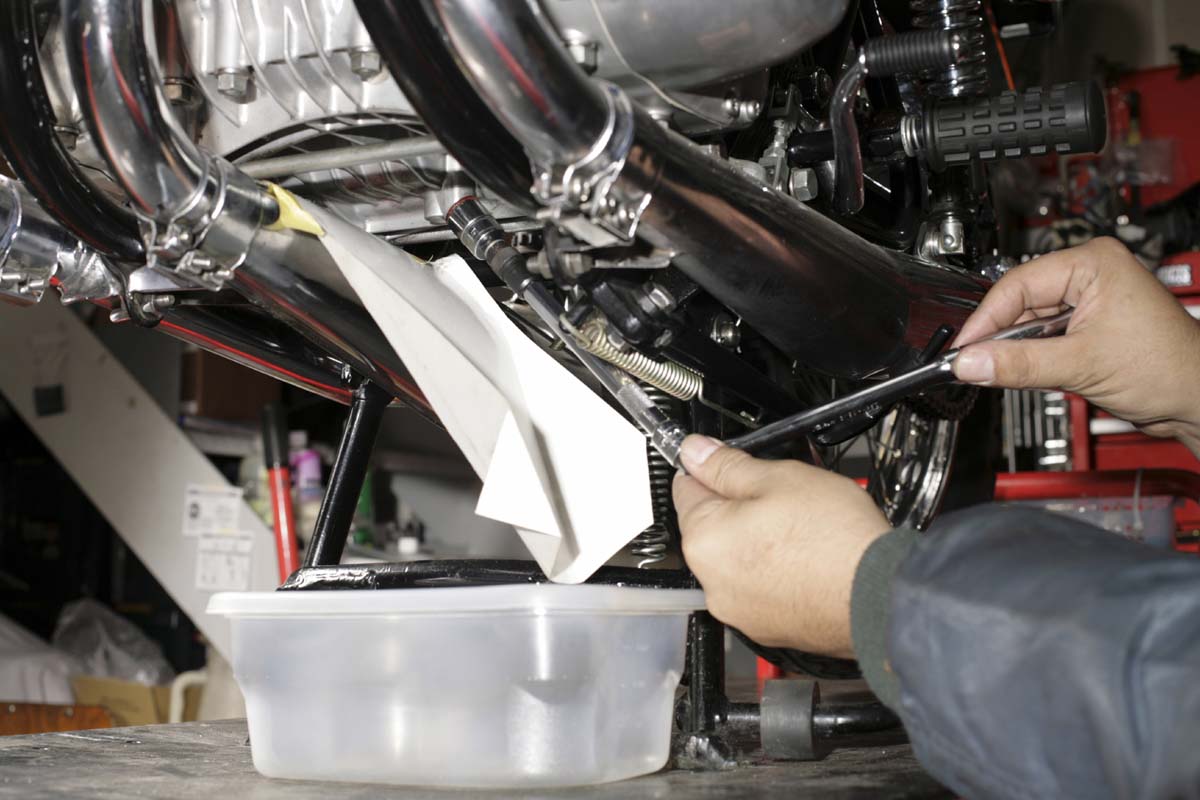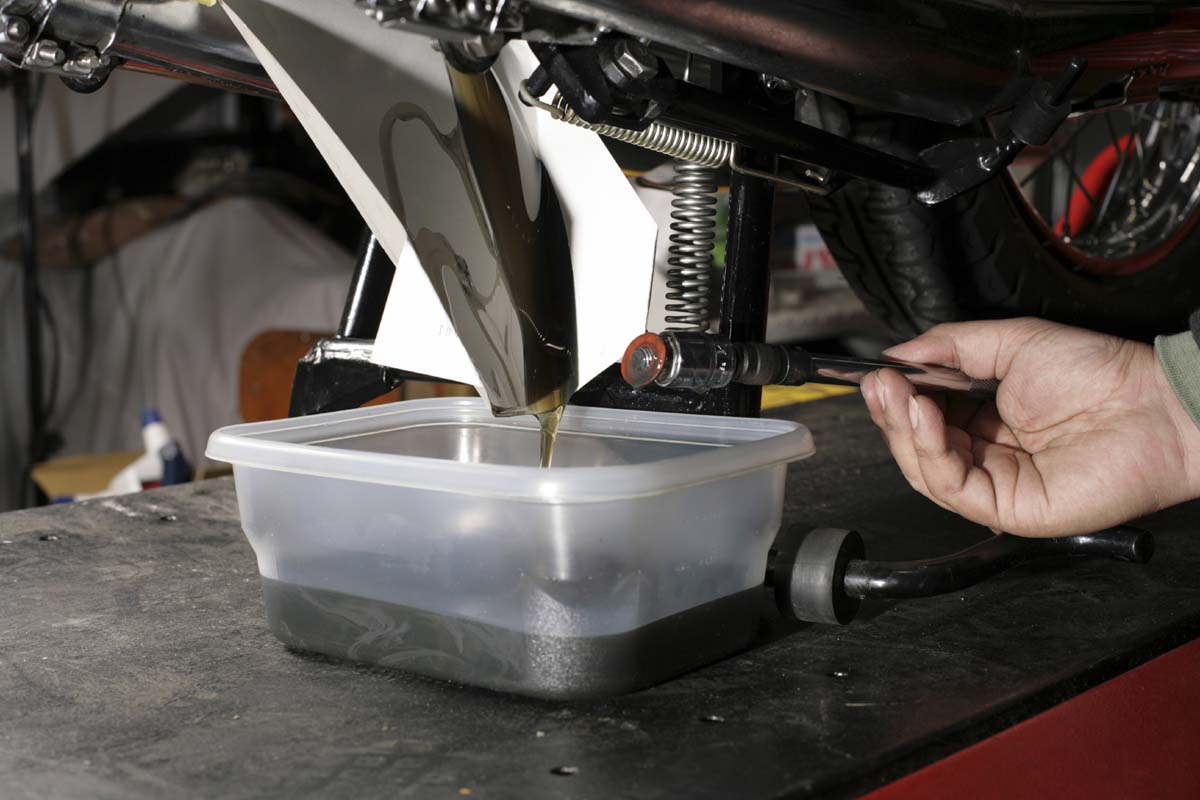Two-stroke engine models are no longer considered an endangered species. Among them, there are many examples of 2-stroke sports cars that have become very popular due to the influence of the old car boom. Surprisingly, gear oil for transmission-equipped sports models is not well known. In fact, many owners continue to run their vehicles without changing the oil because it does not easily get dirty.
Let’s take a look at the importance of various types of oil while changing the gear oil in a large 2-stroke sports model.
- Difference between gear oil and engine oil for 2-stroke engines
- Clean oil change practices without contaminating the work environment
Difference between gear oil and engine oil for 2-stroke engines




Most modern motorcycle engines are of four-stroke design. Only one type of engine oil is used to lubricate the engine interior. In some cases, such as Harley-Davidson, each unit (engine unit, primary drive, and transmission gearbox) is independently laid out, so the best oil is selected and injected into each unit (the Sportster series uses two types of oil, one for the engine unit and the other for the primary with transmission gear). However, in the case of complete unit engines (integrated engines) such as Japanese cars, one type of engine oil is used for all lubrication, so engine oil selection is often a matter of caution. On the other hand, endangered two-stroke engines utilize two types of engine oil: engine oil to lubricate the cylinders, pistons, and crankshaft bearings, and gear oil to lubricate the transmission and primary + clutch units. The requirements for engine oil for 2-stroke engines are high lubricity and combustibility. In order to lubricate the engine, engine oil is mixed with fuel (in the case of a separate lubrication system, the oil pump mixes a specified amount of engine oil with the intake mixture; in the case of 2-stroke engines prior to the early 1960s, engine oil is mixed with fuel), the engine burns well with explosive combustion and does not emit carbon sludge or another combustion residue, nor does it contaminate the inside of the exhaust system. This was the proof of high-performance 2-stroke engine oil. On the other hand, gear oil lubricates the clutch and transmission gears. If it’s in there, you’ll be fine! was the motto of riders in the old days! It goes without saying that a good oil change is extremely important to keep the clutch and transmission in good condition.
Clean oil change practices without contaminating the work environment




Unlike drain bolts on 4-stroke engines, drain bolts on 2-stroke engines are difficult to pull out and are often laid out in places that are difficult to wrench on. It would be a real hassle to change the oil if it were a hassle because it would make the engine and work area dirty. When changing gear oil, it is a good idea to wipe off the dirt around the drain bolt with parts cleaner or a rag, and then use a piece of calendar paper, for example, as a guide to drain the gear oil after it has been turned out. Of course, if the oil comes out in large quantities at a high rate, such as in a 4-stroke engine, it is also a good idea to install a guide to avoid oil. This is exactly what is meant by hurry up and get going. As a specific example, the Yamaha SR’s engine oil is from a dry sump system, so the oil tank is the down tube of the frame. The drain bolt is tightened in front of the frame pipe, but if it is loosened and removed without thinking, the front tires may be covered in oil from the ejected engine oil. In such cases, the guide does a good job.